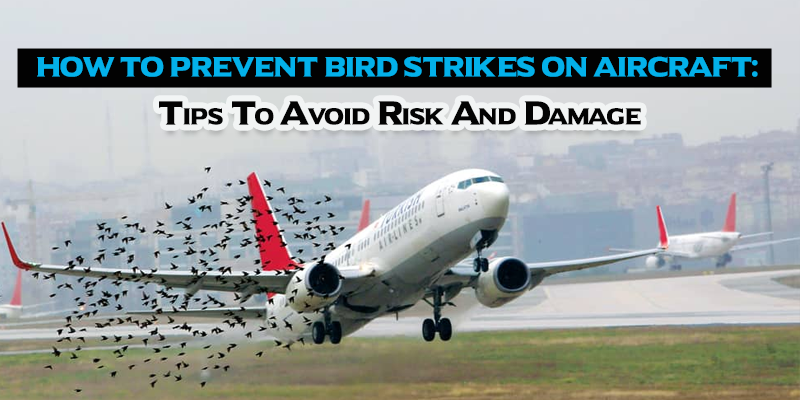How to Prevent Bird Strikes on Aircraft: Tips To Avoid Risk And Damage
Bird strikes on aircraft are becoming more common these days. Almost every nation is facing the challenge of predominant bird strikes. Airports and aircraft personnel often face a constant, frequently crippling burden. Many countries, therefore, have invested money in researching how to prevent bird strikes on aircraft.
Bird strikes and wildlife hits cost the American military and commercial aircraft over $900 million on an annual basis. The issue has been escalating for many years. Not just in America but in every country’s civil aviation industry, this issue has become a heated debate.
What are bird strikes?
A bird strike occurs when a bird strikes directly at an aircraft, which can damage the aircraft. This ultimately results in the repair of expensive parts, flight delays, or sometimes emergency landings. Preventive actions may minimize expenses and safeguard aircraft from unwanted damage.
It is absolutely correct that bird strikes are often less hazardous than any other aviation-related risk. However, it is extremely pivotal to take preventive measures to ensure bird strikes do not risk aircraft as well as passengers.
How to prevent bird strikes on aircraft: Tips to Avoid Risk
Test and prepare aircraft to resist bird collisions:
Airplanes should be crafted considering all the specified requirements. They must be regularly checked and tested to ensure they can withstand bird strikes, which happen when birds collide with planes. These inspections help determine that the aircraft is strong enough to handle such impacts without damage.
Additionally, planes should be fitted with special bird guards and screens to prevent birds from being sucked into the engines. These precautions are important for the safety of both passengers and the aircraft, as bird strikes can cause serious damage if not properly managed. Regular testing and protective equipment help minimize these risks.
Birds strike resistance system should be adopted:
How to prevent bird strikes on aircraft, it is becoming a paramount concern, and airline companies are taking the right measures for this. Airports use various methods to keep birds away and prevent them from getting too close to planes.
Many aircraft use bird-repelling sound systems that play noises that birds usually don’t like, which encourages them to stay away. Airplanes also set up visual deterrents like bird netting and scarecrows to make the area less inviting for birds. These strategies are important because birds near airports can be dangerous, especially if they collide with planes.
Alterations to aircraft flight plans:
Flights can be scheduled keeping in mind the peak time of the bird’s activity. It is possible to change flight schedules to avoid times when there is a high likelihood of bird activity and potential danger. When birds are active, it is preferable to avoid taking off on flights by the aviation authority. However, at large commercial airports, this is usually not a feasible option.
Airports can also use sonic deterrents to frighten birds away from their flight paths. Other approaches include scaring birds away with aircraft and keeping them at a distance using birds of prey.
Bird-native habitats must be managed:
The aviation authority must focus on managing birds’ local habitat to keep them away from both aircraft and airports. It can be possible by creating extensively attractive environments for birds away from the concerned airport. The authority can set up bird feeders and nesting boxes in more strategic and safer locations.
They can use techniques to encourage birds to settle away from the flight paths. It will help in mitigating the chances of birds coming into contact with aircraft, which can be dangerous for both birds and people. By properly guiding birds to live in areas far from the airport, staff can help protect birds and planes from colliding with each other. This will ensure safer skies for birds and further prevent damage to aircraft.
Conclusion:
These are the tips to give a reliable answer to the question of how to prevent bird strikes on aircraft. Along with these strategies, bird-strike immediate reporting is also essential to understanding bird behavior and the overall bird population in an area.
Tracking bird strikes continuously can help authorities and officials have a better understanding of the subject. Proper information and knowledge about bird strikes can assist in reducing the chances of serious bird strikes. Accurate documentation of these instances is important to protect aircraft from damage caused by bird strike threats as well as bird ingestion
To know what initiatives different airline companies take to prevent bird strikes or book safe flights to India from USA, contact flightstoindia.

 1-877-448-8698
1-877-448-8698